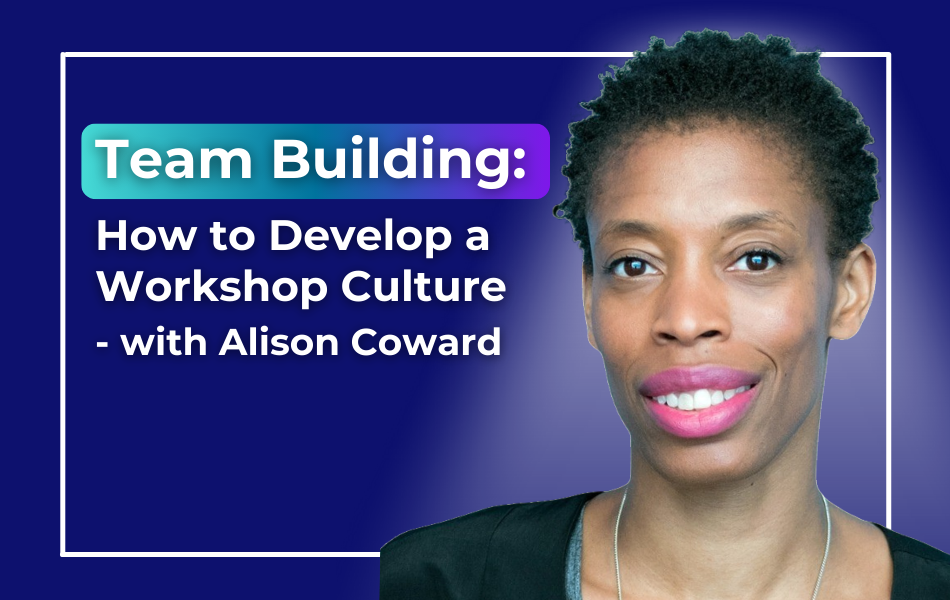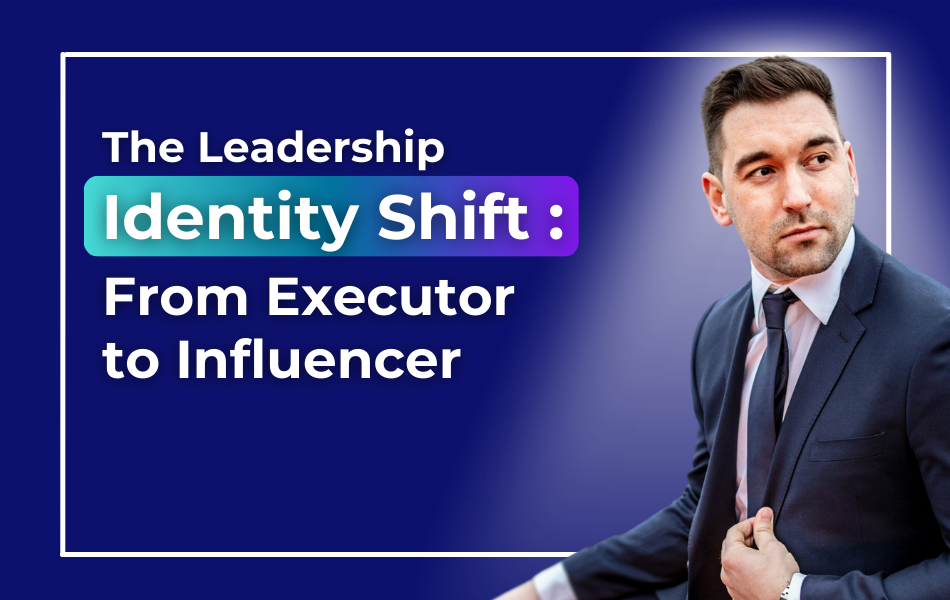
219. Executive Communication
About this Podcast
Ep. 219 – In this episode of The Manager Track podcast, Ramona Shaw expands on the art of executive communication. Building on the foundation laid in a previous episode about the executive mindset, Ramona provides valuable insights and practical tactics to enhance your communication with senior leaders and executives.
Ramona tells the story of a pivotal moment in her career where a misstep in executive communication had lasting consequences. Based on everything she has experienced since that moment, Ramona shares her expertise by outlining several key strategies for effective executive communication, including how to frame discussions, handle pushback, and keep messages concise even if the topics are complicated and complex.
Whether you’re aiming to establish trust, present effectively, or navigate challenging conversations, this episode equips you with best practices to help you excel in high-stakes interactions.
This episode is for anyone aspiring to elevate their leadership impact through effective communication with their senior leaders.
Watch it on YouTube here.
Episode 219 Transcript:
0:00:00 Ramona Shaw: This episode is all about executive communication. We’re going to look at some of the hows. I’m going to give you a lot of suggestions on how to better communicate with your stakeholders. We’re going to also look at the mindset to adopt in order to communicate effectively with senior leaders and executives.
0:00:16 Ramona Shaw: Here’s the how do you successfully transition.
0:00:19 Ramona Shaw: Into your first official leadership role?
0:00:21 Ramona Shaw: Build the confidence and competence to lead your team successfully and establish yourself as a respected and trusted leader across the organization? That’s the question, and this show provides the answers. Welcome to The Manager Track podcast. I’m your host, Ramona Shaw, and I’m on a mission to create workplaces where.
0:00:39 Ramona Shaw: Work is not seen as a source.
0:00:40 Ramona Shaw: Of stress and dread, but as a source of contribution, connection, and fulfillment. And this transition starts with developing a new generation of leaders who know how to lead so everyone wins and grows. In the show, you learn how to think, communicate, and act. Ask the confident and competent leader.
0:00:58 Ramona Shaw: You know you can be welcome to this episode on Executive Communication. This is kind of a part two to a previous episode we recorded on the executive mindset. So in case you missed that episode, check out the show notes to grab the link to that episode so you can get both components, the mindset and the communication, that go hand in hand together in this episode. Today, I’m going to share specific tactics on how to get better with executive communication.
0:01:28 Ramona Shaw: We’re also going to talk a little bit about that attitude, that mindset to get into in order to do executive communication. Well, now, I also want to let you know that on August 19, we will kick off our executive presence intensive. That’s a four week coaching and training program on executive presence. So if the executive mindset and executive communication if this resonates with you, chances are really high that you would greatly benefit from our executive presence intensive program starting in August. So check out the show notes to get the details on the program.
0:02:04 Ramona Shaw: We will also announce this to everyone who’s subscribed to our weekly newsletter. In our weekly newsletter, we share research and studies on leadership, as well as news as it relates to AI in the workplace. To subscribe to our newsletter, head on over to arkoba.org Slash subscribe and that’s how you’ll stay in the loop. Okay, that aside, before we dive in, I want to share a quick example of how I massively failed when it comes to executive communication in a previous role and the impact that that encounter had on me from then on out. The reason I’m sharing this with you is because when it comes to senior leaders and executives, we often only have very limited exposure to them, limited one on one time or even moments in meetings where their eyes and ears and their attention is on what we’re saying. And as they’re listening to us and observing us, they’re forming a perception and an opinion and our competence, and that will either increase their trust in us and their belief in us and their support for us, or it will decrease it.
0:03:12 Ramona Shaw: And so within sometimes seconds or minute minutes, that arrow is either going up or down in their internal minds as it relates to your competence, and that will influence the way that they see you in the future, the way that they will support your promotions or even just new opportunities for growth. So the moment when I bombed this was, I was called into a meeting, somewhat short notice, to discuss a situation we had with a client. So we were proposing something to a client, and I was called into a meeting with my boss and with the CEO of the company to discuss this specific situation.
0:03:50 Ramona Shaw: And what happened was the meeting started and there was a clear vacuum. Like, I did not step in to take the lead. I kind of stepped back, and I didn’t step in and lead. And looking back, it was because it was a last minute meeting and I wasn’t sure what the goal was, what the purpose was of the meeting, and I wasn’t sure who was going to lead it. I had my boss there, I had the CEO there. Did they want to kick off the meeting?
0:04:19 Ramona Shaw: What is their agenda? And I kind of took a seat back thinking, okay, well, we’ll go with the flow. Big mistake. What happened was they were both looking to me to run the meeting, to set the stage, and to come to a clear resolution from how to go about this interaction with the client and our proposal to them. And I missed the opportunity to do this. So what happened was it was a little awkward silence. And then I guess my boss stepped in and was kind of laying out the reason for the meeting and was guiding me. And as time went on, a few minutes into this, I realized, like, oh, my gosh, they’re looking to me to lead this meeting and to present the proposal.
0:05:01 Ramona Shaw: I was trying to pivot, but it felt like I already lost the CEO’s attention. I already can tell that they’re, like, doubting my competence and my ability to execute this proposal with that client. Well, and trust was, that arrow on trust was going downwards. And from then on out, I realized that it was hard for me to get the CEO’s attention, to get on his calendar. It was also more difficult for me to work independently from my manager. And I noticed that my manager was getting more and more involved in this project, this initiative with the client, and it took a good couple of months to regain the trust that I lost within minutes of that one meeting.
0:05:44 Ramona Shaw: So sometimes like dropping the ball, not showing up with strong executive communication can have a lasting effect. And the big lesson I had to learn, although intellectually seemed so obvious, but somehow I still dropped the ball. And not recognizing that me being in a meeting with my boss and the CEO, I can’t just wait for the meeting to start to then figure out what the meeting was about. No, I won’t get into a meeting until I know exactly what is this meeting about, what are we trying to accomplish and who’s running the show so I can show up as my best self from the first 2nd on, from the moment that the CEO walks into the room, that understanding is there and I won’t be running the risk of a situation like this happening again.
0:06:28 Ramona Shaw: So this is just one example by the way. I could tell you more examples and the hard ways I had to learn some of these lessons. And I think many of us sort of fumble our way through this and have to learn the hard way that executive communication matters. And not doing the upfront work, not being prepared, not practicing and honing in our communication skills can backfire. And we do so well in working hard and, you know, building up our technical or professional expertise.
0:06:57 Ramona Shaw: And then when it comes to communication, we take a big chunk out of all the credibility that we’ve built because we missed that aspect, that soft skill, so to speak. So with that in mind, let’s talk about a few mindset things or a few attitude things to keep in mind, and then we’ll get into tactics. The first one to pay attention to when it comes to your mindset is if you find yourself doing really well in certain meetings, but not so well in other meetings, know that this is now not a question of skill.
0:07:29 Ramona Shaw: Your communication skills are likely strong because you can do well in one meeting, but then you fumble your way through in others. This is not a skill issue. The issue is your emotional state. In one meeting, you’re sharp because your emotions are probably low, you’re not stressed, you’re not nervous, you’re not intimidated. You mentally feel like you’re leading it, you’re deserving it, you’re confident mindset attitude that you’re bringing to that meeting, you do well in those settings.
0:07:59 Ramona Shaw: The moment I now move you into a setting where you’re not sure if you belong there. You don’t know if you deserve the, the seat at the table or if other people agree that you deserve the seat at the table. There might be a person. If some people seem rude or intimidating, some people may interrupt you as you’re talking. And now your emotions and your anxiety or your nervousness level rises. And when emotions go up, intelligence and our ability to think rationally, logically, and show up as our best on the analytical front goes down.
0:08:35 Ramona Shaw: So that’s why we use a lot of m’s. We might be too verbose, or we don’t ever get a word in, or we, when we get challenged, we kind of shrink. We won’t push back or advocate with conviction for our ideas or our opinions. So it’s not necessarily a skill issue. It’s not necessarily a competence issue. The issue at hand is your mindset, your attitude going into one meeting versus the other. And that is the thing we have to work on, and it’s part of executive presence.
0:09:04 Ramona Shaw: In our program, we call this your inner executive, and that’s the first thing we’re going to look at. Now, let’s move into the tactics. So, tactically speaking, when it comes to executive communication, which I define as communicating with senior leaders or with executives in your organization or other stakeholders, it could be partners, it could be clients. But where there is a bit of a power gap, there are several things to know, and they’re a bit in random order as I go through them. But these are notes that I took and I want to share. So I’m going to go one by one.
0:09:37 Ramona Shaw: It is no longer about you and your problem. When you have a very nice manager, maybe a middle manager, frontline manager, and you can go to them and kind of vent or just address things and ask them things that have nothing to do with what their agenda is, it’s just about you. Like you. Please come help me. Can I get your two cent on it? Yes. The frontline leaders and middle managers, they’re likely going to do that because they have capacity to do this, and it’s also more so part of their job.
0:10:09 Ramona Shaw: But as you elevate and as you speak and interact with higher level leaders, the less of that is part of the relationship, at least not the formal relationship, which we’re addressing here. With executive communication, anything that you bring to their attention needs to relate back to a problem that they have. If you just say, this is me problem, and can we talk about it? They have many, many other more important things to do than that. They kind of like go elsewhere for that. I don’t know. Do you have other people in the that can help you with a you problem?
0:10:44 Ramona Shaw: I need to be so disciplined with my time that I can only talk to or give attention to the things that matter to my strategic objectives or priorities in the organization. And so when you communicate with them, highlight how whatever you’re saying or asking for is a you problem. It’s a problem for them or solves a problem for them. And that is a big shift that many people don’t recognize happens as they elevate in their careers.
0:11:11 Ramona Shaw: Transitioning from being an individual contributor and IC into your first leadership role is one of the biggest transitions that you’ll make in your career, because the things that made you successful as an IC will not be the same things that will make you successful as a leader and especially in a new role. When all eyes are on you, when you know your boss wants you to succeed and is watching closely, your peers are having an eye on you. Your team members are keen to figure out how to work with you and whether or not they can trust you during this time. By the way, whether or not you’re a first time manager or you’ve led teams in the past, but you’re in a new role as a new manager to the team or even to the business, this is a time in which you don’t want to wing it.
0:11:56 Ramona Shaw: Go into such a situation with a plan and with specific tools that will help you build trust and gain the respect of your coworkers. In our new manager toolkit, we’ll give you guides, tools, checklists, and lots of things that are important for any new manager to keep. Keep in mind, head on over to arkova.org free toolkits to grab your copy. You can also find that link in the show notes or the captions. I’ll see you over there.
0:12:23 Ramona Shaw: The second one is that when you speak to executives, there needs to be a clear reason why you’re talking to them and a clear outcome. I look back at my career. The moments that I showed up as my best self in executive communication was very early in my career. I was an intern and my boss was pretty high level, and he was also incredibly busy. And he would call me on the phone and say, I got four minutes now for this thing you want to talk to me about. Meet me in my office.
0:12:57 Ramona Shaw: Four minutes. I had to be in and out in four minutes, and he would do this all the time. I would email him and say, I need your decision on this or I need to talk to you about XYZ. And then randomly through the day, he would call me and say, okay, I got five minutes, seven minutes, eleven minutes, four minutes, whatever it was. And I had to be in. I had to be concise, or, like we say, brief, bright, and be gone.
0:13:20 Ramona Shaw: And it trained me and pushed me to do this. Well, when I wrote an email and I said, I need this decision from you, I already knew I had to explain enough background but not overload them with details. At least that was his personal preference. I needed to demonstrate different options, like ways that we could address it and pros and cons for each. And I needed to have a preferred opinion about it, and then I needed to be very clear of what I need from him is this.
0:13:51 Ramona Shaw: Just give me your two cent so I can then bring this to someone else and let them know what you think. Do I need a decision? Do I need to just inform you about something? What is it that I need? And that needed to be like the headline of the email, the first thing I said, then the options, then the preference, and then, you know, add on details if necessary, and I would go in and know exactly how to approach that conversation in order to get the outcome I wanted in four minutes.
0:14:20 Ramona Shaw: A lot of executives operate that way. And while not everyone may be as stringent or specific with their time, most of them appreciate when you come in and you have a clear ask, you have a clear plan on what you want to talk to them about clear action or outcome at the end of this. So going in with a problem without demonstrating that you’ve critically thought about it, that you have already tapped into different resources and gathered information necessary, without a clear plan of what this meeting is about and why you’re informing them about this is not perceived as strong executive presence.
0:14:58 Ramona Shaw: And that leads me to the third tip, which is, as you’re communicating this to them, know what they care about the most and think about their personal motive, which maybe they’re generally very focused on client satisfaction and relationships, or they might be really focused on quality and doing things right, or they may be really focused on performance, results, and outcomes. So that’s like an ingrained motive that we have.
0:15:29 Ramona Shaw: What is it for the person that you’re going to address? And then the second question is, what is currently top of mind for them? What are strategic initiatives? What are topics that are relevant for them? And if you can tailor your message to address those specific items, your message will land more effectively. Now, that means you’ll need to do some prep work, or I would actually say you need to have some kind of process or routine to continuously check in and evaluate what are your executives priorities and pay attention to what they’re talking about, how they spend their time, broadly speaking, what they talk about in all hands meetings, or the things that they communicate through other channels, and then find opportunities to tie in whatever you’re doing or whatever you’re asking to that.
0:16:22 Ramona Shaw: Some executives also have pretty strong values that they demonstrate on a regular basis or that they want to cultivate in the organization. Let’s say a company value in a startup might be being scrappy or failing fast, maybe something that a company wants to cultivate and ingrain in the employees as an approach, or in the value to an approach and a value that shapes their culture. If you then raise that topic or you bring that term into your message with them, you get a bonus point. And so it can be very useful to leverage that kind of language when communicating with your executives.
0:16:59 Ramona Shaw: If you go in and you say, listen, I took a scrappy approach to give me a ballpark number of what the opportunity might be, it’s a win. You demonstrate that you understand the importance of scrappiness, and you tied it right back into what you were doing and what you’re messaging here. I think that was number three. Number four is to differentiate facts from opinions. Especially analytical people value this a great deal. If you can distinguish what are the facts, and then what is my opinion about those facts versus convoluting them and making them all one and turning assumptions into pseudo facts, that gets really tricky. Executives have to operate with a very discerning mindset in identifying what do we know for sure?
0:17:47 Ramona Shaw: What are assumptions and what are opinions about things. They’re categorizing information that way oftentimes. And so if you can speak to this, it makes you more effective. You can talk about, here’s what we know for sure. Here are the facts, and then here are the assumptions, or here are the interpretations of that, or here are the opinions of that. You separate this and you call it out in the way that you communicate.
0:18:12 Ramona Shaw: So that is number four. Number five, be prepared to get some pushback. Sometimes executives push back on what you’re saying, not necessarily because they don’t believe in what you’re demonstrating, but because, one, they may see it as their job to challenge the leaders in their organization to help them think more thoroughly when addressing problems. So one, it may be their job, but two, they may also just want to test your conviction in this.
0:18:43 Ramona Shaw: And how confident are you in it? Because if you present something to me and I give you some pushback, or I challenge you on it, and then you immediately waffle and change course. Just because I said that, I’m going to start to think you didn’t really do the homework to have enough backup to push back, to come in here with conviction and with backup data if necessary. So know that just because you’re being challenged or you receive pushback, that doesn’t mean the right thing to do is to back down or to change your plans.
0:19:16 Ramona Shaw: It means to double down and lean in. And not in an aggressive or necessarily confrontational way, but in a way to demonstrate your conviction. Assuming you did the homework, now, if you didn’t do the homework, the research, you haven’t talked to enough people to back up what you’re presenting, that’s a different story. But assuming that you do double down and explain more why what you’re saying is the right idea or the right approach.
0:19:43 Ramona Shaw: So keep that in mind. Pushback and being challenged is just part of the conversation. Don’t take that personally and don’t back down. Next one, skip the details. You don’t need to provide all the details to confirm, to let other people know that you know all the things and that you are very knowledge about it. That is not effective. When you present something, the assumption is that you do know the details and that’s why you’re the one presenting it.
0:20:13 Ramona Shaw: If you think they need to have the details in order to make a decision, you can say, here’s the executive summary we’re talking in. Highlights, key takeaways, key factors and so forth, then you can say, now can share more details about one, two and three. Would that be helpful? Yeah, sure, provide us more detail. But then you go into it or you say, do you have any questions about this and how we came to this conclusion? I can elaborate further if you’d like.
0:20:43 Ramona Shaw: But if they say, like, no, I don’t need that, don’t say it, don’t walk in. Assuming that they need to have all the details, or assuming that you need to share all the details to prove that you’re the right person for this project. This is one that especially very intelligent people often have a hard time because they pride themselves the knowledge that they have and so they want to share all the data points and all the necessary information.
0:21:09 Ramona Shaw: But it’s overwhelming to someone else. So keep it concise and you check whether or not more details are required. Okay. And then last but not least, it’s okay to ask for feedback. If you have an interaction with an executive or you’re part of a leadership meeting to say like, hey, you know, I’m really trying to work well with you in these types of interactions to be concise, to be clear with you, and to provide you all the information that you need. Do you have any suggestions for me and how to make this even better for you or more effective for you going forward?
0:21:39 Ramona Shaw: Ask for suggestions. They all know that you’re still growing into this role and that you’re interested in their opinion, and then you’ll try to integrate that feedback and future interactions. That is good practice. So don’t hesitate soliciting feedback on your executive communication from trusted people or from the executives themselves. These were some tactical things that I wanted to share. Again, if you found this helpful and if you read this resonates with you and that you know that these types of skills are necessary for you to reach the next level, then check out the details on our executive presence intensive that we’re going to launch on August 19. That’s the wrap.
0:22:20 Ramona Shaw: Have a great rest of your day and ciao for now.
0:22:24 Ramona Shaw: If you enjoyed this episode, then check out two other awesome resources to help you become a leader people love to work with. This includes my best selling book, the Confident, incompetent new manager, which you can find on Amazon ormonashaw.com book, and a free training on how to successfully lead as a new manager. You can check it out@ramonashaw.com masterclass these resources and a couple more you’ll find in the show notes down below.
REFLECTION & DISCUSSION QUESTIONS
- Ramona emphasizes the importance of understanding executive priorities and aligning your communications accordingly. How can you improve your awareness of these priorities within your organization?
- Reflect on your current approach to sharing information with executives. Are there areas where you could improve in terms of clarity, brevity, or alignment with their strategic interests?
- In what ways can you integrate feedback from senior leaders into your ongoing development as a communicator?
RESOURCES MENTIONED
- Download the New Manager Toolkit at https://archova.org/free-toolkits/
- Subscribe to our weekly newsletter where we feature leadership-related news, such as studies or other timely insights, and AI news relevant to workplaces at archova.org/subscribe
- Learn how to turn your 1-on-1 meetings from time wasters, awkward moments, status updates, or non-existent into your most important and valuable meeting with your directs all week. Access the course and resources here: ramonashaw.com/11
- Have a question or topic you’d like Ramona to address on a future episode? Fill out this form to submit it for her review: https://ramonashaw.com/ama
OTHER EPISODES YOU MIGHT LIKE
- Episode 6: Navigating Difficult Conversations at Work
- Episode 171: Communicating With Numbers
- Episode 213: Executive Mindset
WHAT’S NEXT?
Learn more about our leadership development programs, coaching, and workshops at archova.org.
Grab your copy of Ramona’s best-selling book ‘The Confident & Competent New Manager: How to Rapidly Rise to Success in Your First Leadership Role’: amzn.to/3TuOdcP
If this episode inspired you in some way, take a screenshot of you listening on your device and post it to your Instagram Stories, and tag me @ramona.shaw.leadership or DM me on LinkedIn at linkedin.com/in/ramona-shaw
Are you in your first manager role and don’t want to mess it up? Watch our FREE Masterclass and discover the 4 shifts to become a leader people love to work for: www.archova.org/masterclass
Don’t forget to invest time each week to increase your self-awareness, celebrate your wins, and learn from your mistakes. Your career grows only to the extent that you grow. Grab your Career Journal with leadership exercises and weekly reflections here: ramonashaw.com/shop
Love the podcast and haven’t left a review yet? All you have to do is go to ramonashaw.com/itunes and give your honest review. Thanks for your support of this show!
* Disclaimer: Shownotes may contain affiliate links. That means that I am awarded a small commission for purchases made through them, at no added cost to you.







